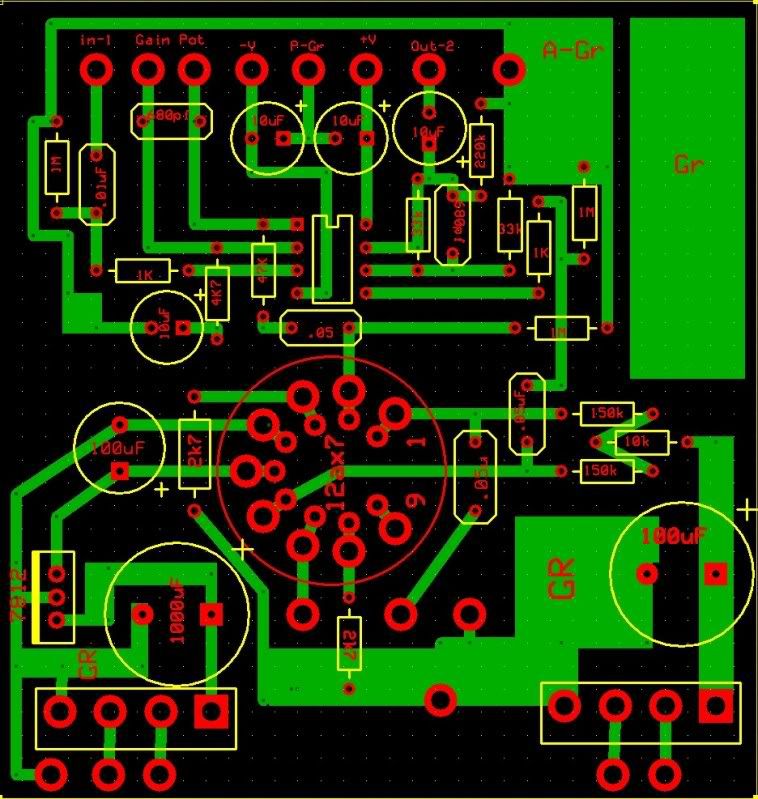> drop the plate resistor to well below Rp of the tube which is a nono.
No no, not a no-no, not for this case.
Paia did NOT want a "good amplifier". Distortion, overload... everything bad is good.
For Paia's values, Koren 12AX7 model, 70V supply, I get plate sitting near 40V, cathode near 0.3V, one-stage gain gain near 22, 7Hz-70KHz. Gain rises very little at 150V and 300V supply. 1Vpk input gives +15V(squished) -22V output for 70V supply, +23V -24V output for 300v supply.
I won't argue Curtis' 26V 0.15mA values, because real 12AX7 vary a LOT at low current. The idea is the grid is awful close to the cathode; how-close varies a lot between factories and production lots. And then each model is based on different measurements, and most are extrapolating their buts off at very small current.
Why is it acting bad? It has WAY too much gain. Is it built on Paia's PCB, or is it home-brew? Do you have experience with HIGH-gain amplifiers?
If you just want a gitar preamp, there are much better paths. Steal the first two stages and layout from any Fender Blackface. The AA-Champ is a fine reference.
No no, not a no-no, not for this case.
Paia did NOT want a "good amplifier". Distortion, overload... everything bad is good.
For Paia's values, Koren 12AX7 model, 70V supply, I get plate sitting near 40V, cathode near 0.3V, one-stage gain gain near 22, 7Hz-70KHz. Gain rises very little at 150V and 300V supply. 1Vpk input gives +15V(squished) -22V output for 70V supply, +23V -24V output for 300v supply.
I won't argue Curtis' 26V 0.15mA values, because real 12AX7 vary a LOT at low current. The idea is the grid is awful close to the cathode; how-close varies a lot between factories and production lots. And then each model is based on different measurements, and most are extrapolating their buts off at very small current.
Why is it acting bad? It has WAY too much gain. Is it built on Paia's PCB, or is it home-brew? Do you have experience with HIGH-gain amplifiers?
If you just want a gitar preamp, there are much better paths. Steal the first two stages and layout from any Fender Blackface. The AA-Champ is a fine reference.













